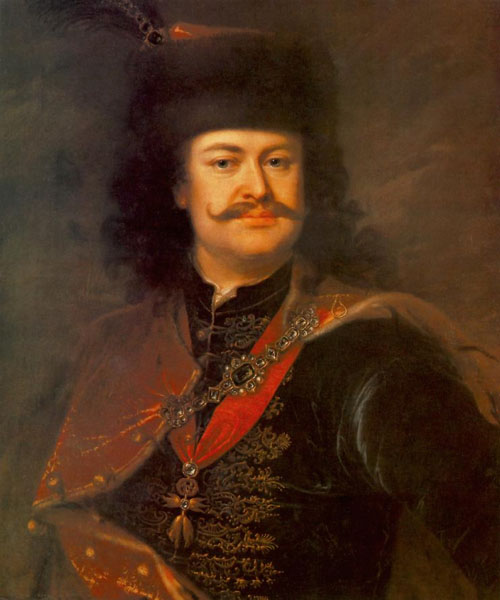
Francis II. Rákóczi (in Hungarian II. Rákóczi Ferenc) comes from the ancient and wealthy family, whose roots go back to the time of beginning of the Kingdom of Hungary, moreover, related to a family of other significant Hungarian magnates. His ancestors came out of the anonymity during the civil uprising led by Stephen Bocskay and shone on the political sky of Transylvania and Upper Hungary during the 17th century. After studying in Austria and Bohemia, where Rákoczi had been
trained at the Prague University for a future courtly aristocrat and the tour of Italy, a young 18-year old Francis II. Rákoczi in 1694 he returned to his great estates in Upper Hungary. He served as Lieutenant of the Saris County, trying to fix his property and rights to ensure his professional status and titles. He acted with caution, because he felt that Vienna is watching over his actions and does not trust him. He was the bearer of the name, which was a symbol of anti-Habsburg efforts and therefore his environment made him feel uninvited.
Virtually all family members were personally connected with the Kosice, Slovakia and its eastern part. His father, Francis I. Rákóczi (1646 - 1676), was involved in the conspiracy of Veeléni then was thrown into the imperial prison, from which he was redeemed, but died as a result of incarceration. His mother, Helena Zrinsky (born 1643) was from a famous Croatian family. After the death of Francis I.Rákóczi she married Imre Tököli (1657-1705). She participated in the revolt, followed her husband into exile in Turkey and here in Nikomédii died in 1703. His grandmother, the famous Princess Zofia Báthory (1629 - 1681) was the founder of the Kosice Jesuit church, where he was buried together with his father.
History
Where you can to find us:
...located in ilina, on the north-west corner of the Marian Square, house no. 20,also known as Rákóczi House.
You will find yourself on the main square in the historical center of ilina, in newly renovated house while maintaining its historical character, which in the 17th century was in possession of Frantiek II Rákoczi an important noble man of an important ancient family of Hungary.

